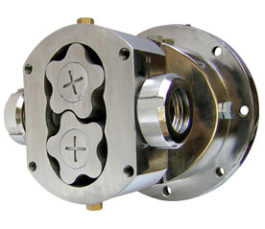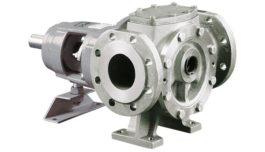Positive Displacement Pump
A Positive Displacement (PD) pump is a type of pump that moves fluid by trapping a fixed volume and forcing it into a discharge pipe. Unlike centrifugal pumps, which rely on velocity to impart energy, PD pumps deliver a constant flow rate regardless of pressure, making them ideal for applications requiring precise fluid delivery.
PD pumps operate by repeatedly enclosing a fixed volume of fluid and mechanically moving it through the system. They are broadly classified into two types: rotary and reciprocating. Rotary PD pumps use rotating components, such as gears, lobes, or screws, to trap and transfer fluid. Examples include gear pumps, which use intermeshing gears to move fluid, and vane pumps, where sliding vanes create chambers. Reciprocating PD pumps, like piston or diaphragm pumps, use a back-and-forth motion to displace fluid, often providing high pressure for viscous liquids.
Key advantages of PD pumps include their ability to handle high-viscosity fluids, maintain consistent flow under varying pressures, and self-prime effectively. They are widely used in industries like oil and gas, chemical processing, and food production for tasks requiring accurate metering or handling thick fluids like syrups or slurries. However, they can be less efficient for low-viscosity fluids and may require more maintenance due to moving parts.
Limitations include sensitivity to dry running, which can cause damage, and potential pulsation in flow, requiring pulsation dampeners in some applications. Overall, PD pumps excel in precision and versatility for specialized fluid-handling needs.
Showing all 7 resultsSorted by popularity
-

Peristaltic Pumps
Read more -

Vertical Multistage Pumps
Read more -

Self-Priming Pumps
Read more -

Submersible Pumps
Read more -

Screw Pumps
Read more -

Rotary Lobe Pumps
Price range: $ 3,800.00 through $ 7,600.00Select options This product has multiple variants. The options may be chosen on the product page -
Sale

Rotary Gear Pumps
Price range: $ 2,125.00 through $ 6,879.00Select options This product has multiple variants. The options may be chosen on the product page
